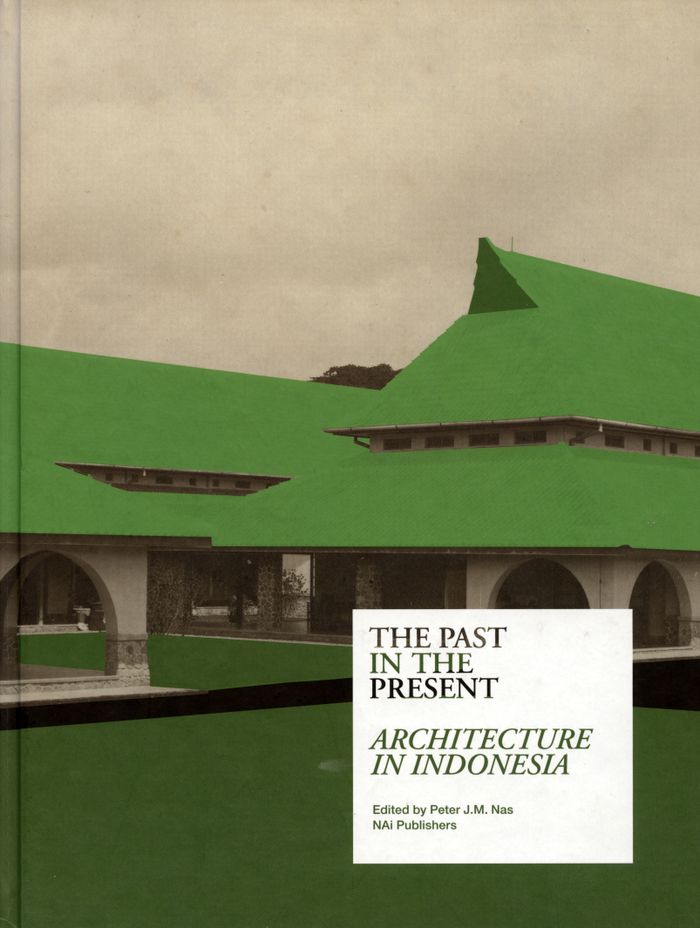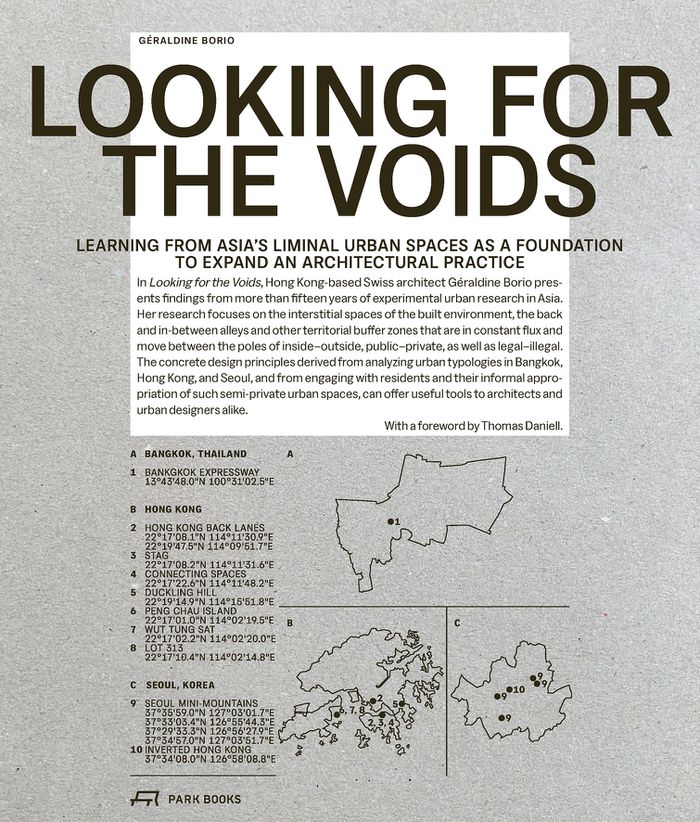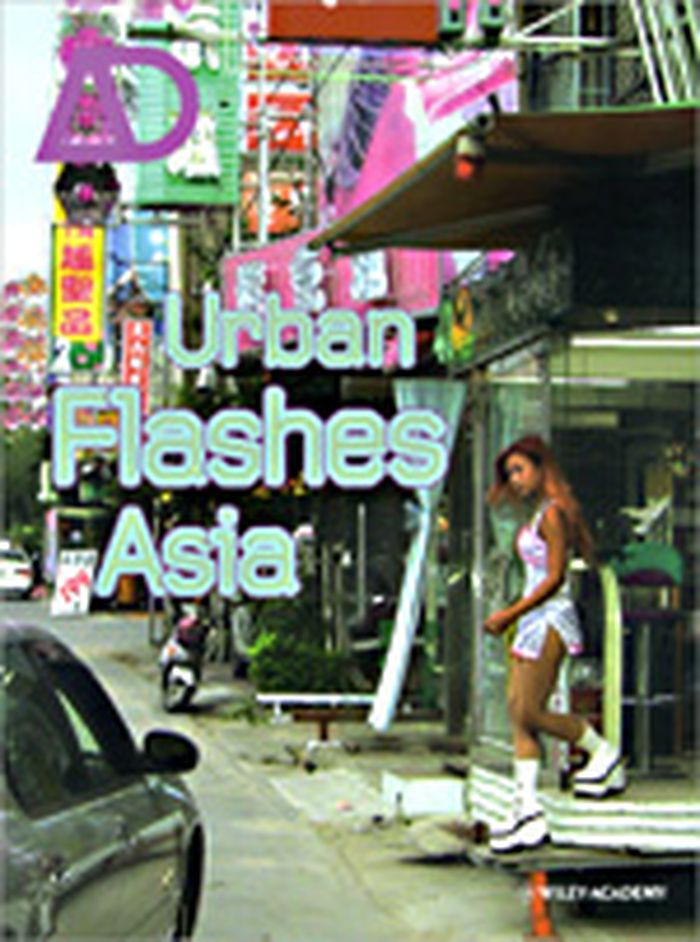$94.00
(available to order)
Summary:
On the occasion of the exhibition "Archilab 2006" dedicated to the Japenese architecture and entitled "Nested in the city", Hyx publish the catalog of the exhibition in french and english version. They present all the projects of thirty invited architects and a set of critical texts which put in perspective the stakes and the subjects of the exhibition. More than any(...)
October 2006, Orléans
Archilab Japan, Orléans 2006 : nested in the city
Actions:
Price:
$94.00
(available to order)
Summary:
On the occasion of the exhibition "Archilab 2006" dedicated to the Japenese architecture and entitled "Nested in the city", Hyx publish the catalog of the exhibition in french and english version. They present all the projects of thirty invited architects and a set of critical texts which put in perspective the stakes and the subjects of the exhibition. More than any other country, Japan was interested at home, the space domesticates being perceived as a space privileging the thought. Hundred of projects presented in the catalog are built for the greater part. Selected by both curators (Akira Suzuki and Mariko Terada), they offer us a panorama of this architects' new generation which began in the 1990s. The most famous in France are doubtless Shigeru Ban presented to Archilab in 1999 and which was the first one to make approve tubes cardboard as support of his houses and also Kasujo Sejima who saw confiding with Ryue Nishizawa the construction of the Museum of the Louvre to Lens. Symbolic Bow Wow workshop is the Leader of this new generation. After the economic crisis of the end of the 90s, the construction of public establishments of average dimension and the competitions of architecture rarefied. The house thus becomes the space of creation privileged for these architects. That's why, in Tokyo, Jun Aoki, Kazuyo Sejima, Ryue Nishizawa, Takaharu and Yui Tezuka, Mitsuhiko Sato, Taira Nishizawa, Masao Koizumi, Yasuhiro Yamashita, Mikio Tai, Yuki Ishiguro, conceive small houses which embody the way of life of their inhabitants and maybe our future today.
$61.95
(available in store)
Summary:
Photographs by Homma Takashi. Roppongi Hills is one of Japan's largest integrated property developments, located in the Roppongi district of Tokyo. Constructed by building tycoon Minoru Mori, the mega-complex incorporates office space, apartments, shops, restaurants, cafés, movie theaters, a museum, a hotel, a major TV studio, an outdoor amphitheater, and a few parks. The(...)
March 2006, Tokyo
Six strata : Roppongi Hills defined
Actions:
Price:
$61.95
(available in store)
Summary:
Photographs by Homma Takashi. Roppongi Hills is one of Japan's largest integrated property developments, located in the Roppongi district of Tokyo. Constructed by building tycoon Minoru Mori, the mega-complex incorporates office space, apartments, shops, restaurants, cafés, movie theaters, a museum, a hotel, a major TV studio, an outdoor amphitheater, and a few parks. The centerpiece is the 54-story eponymous Mori Tower. Mori's stated vision was to build an integrated development where high-rise inner-urban communities allow people to live, work, play, and shop in close proximity to eliminate commuting time. Seventeen years in the making, the complex opened to the public on april 23, 2003.
$60.00
(available in store)
Summary:
The concepts of "Indonesian architecture" and "architecture in Indonesia" are both quite difficult to pin down. For the architecture of this small country incorporates influences from many important cultures--from India, China and the Middle East to countries in the West--and is therefore extremely multifaceted. In fact, one might reasonably ask whether a "real"(...)
July 2007, Rotterdam
The past in the present : Architecture in Indonesia
Actions:
Price:
$60.00
(available in store)
Summary:
The concepts of "Indonesian architecture" and "architecture in Indonesia" are both quite difficult to pin down. For the architecture of this small country incorporates influences from many important cultures--from India, China and the Middle East to countries in the West--and is therefore extremely multifaceted. In fact, one might reasonably ask whether a "real" Indonesian architecture actually exists, even with reference to the country's vernacular work, which is highly diverse from an ethnic perspective in and of itself. The quest for an authentic Indonesian architecture has in fact been the subject of debate among architects there for many years, especially in regards to the work has been exported to other countries--in particular, its former colonizer, the Netherlands. (In fact, there is even a name for the hybrid style that originated during that era: Indische).This very nicely designed collection of illustrated essays, which features a special section of pictures and drawings of colonial architecture, provides a real sense of the diversity of building in modern-day Indonesia--while at the same time recognizing that such a perspective cannot be productive without taking history into account. With chapters on Modern Indonesian architecture, vernacular traditions, mosques, the effect of the Chinese diaspora, hybrid historic/contemporary Balinese architecture, the colonial period, Indische architecture and Art Deco and more, this publication provides an amazing overview and a long-overdue investigation of Indische work. Preface by Aaron Betsky.
Construire en Chine
$37.95
(available in store)
Summary:
Transposer le savoir urbanistique et architectural occidental en Chine. À l’heure où la Chine connaît un développement phénoménal, qui s’accompagne de gigantesques chantiers de construction de logements, de bureaux et d’équipements, et où des villes et des quartiers cherchent à élaborer leur plan d’urbanisme pour leur développement futur, les architectes français et(...)
September 2005, Paris
Construire en Chine
Actions:
Price:
$37.95
(available in store)
Summary:
Transposer le savoir urbanistique et architectural occidental en Chine. À l’heure où la Chine connaît un développement phénoménal, qui s’accompagne de gigantesques chantiers de construction de logements, de bureaux et d’équipements, et où des villes et des quartiers cherchent à élaborer leur plan d’urbanisme pour leur développement futur, les architectes français et européens jouent dans ce pays un rôle non négligeable de conseil et d’expertise, apportant leur réflexion, leur culture architecturale et urbaine et leur expérience. En retour, leur façon de penser l’architecture et peut-être de construire se trouve profondément marquée par l’expérience chinoise. Ce livre, à travers onze interviews, veut témoigner de ces échanges, de ces allers et retours et de tous les questionnements qui les accompagnent.
books
$61.95
(available in store)
Summary:
Introducing the urban and architectural designs Kobayashi has undertaken since the previous edition of "Interventions" (1996). Each project is described in detail by Kobayashi, revealing his thoughts and development over the last five years. In this, he is looking for new models to rejuvenate city plans and the buildings we live in.
January 2003, Tokyo
Interventions II : Masami Kobayashi
Actions:
Price:
$61.95
(available in store)
Summary:
Introducing the urban and architectural designs Kobayashi has undertaken since the previous edition of "Interventions" (1996). Each project is described in detail by Kobayashi, revealing his thoughts and development over the last five years. In this, he is looking for new models to rejuvenate city plans and the buildings we live in.
books
January 2003, Tokyo
$57.95
(available in store)
Summary:
"20:21 - Emerging Hong Kong Architects" presents a spectrum of 20 architectural works from 20 Hong Kong architects selected from an open competition "Emerging Hong Kong Architects" organized by Hong Kong Institute of Architects in April 2003. Architects participating in the competition were asked to respond to 'architecture' amidst this complex 21st century where(...)
April 2005, Hong Kong
20:21 - Emerging Hong Kong architects
Actions:
Price:
$57.95
(available in store)
Summary:
"20:21 - Emerging Hong Kong Architects" presents a spectrum of 20 architectural works from 20 Hong Kong architects selected from an open competition "Emerging Hong Kong Architects" organized by Hong Kong Institute of Architects in April 2003. Architects participating in the competition were asked to respond to 'architecture' amidst this complex 21st century where multi-disciplinary frontiers are more obscure than ever, space topographies are transforming, and active hybridization is in the making. In the book, the architects write about their aspirations in their profession, present their views on architecture, and explore future scenarios; each of different modulations and sensibilities expressed in their own architectural language, and some articulated through the exploration process with various art forms. In a joint effort to navigate through the vista of architecture, this is the first publication from Hong Kong Institute of Architects bringing together a multitude of the established, the upcoming and the heretofore unknown young architects in Hong Kong. Publication in English and Chinese.
books
$63.95
(available in store)
Summary:
Posing philosophical questions at the outset, the publication “Being Chinese in Architecture” features seven different projects by Rocco Design in Greater China. The work ranges from single house to residential complex, hotel, cultural building to urban planning - Distorted Courtyard House by the Great Wall, Bamboo Pavilion at Berlin/Hong Kong, Giu-gen-tong Villa in(...)
January 2004, Hong Kong
Being Chinese in architecture : recent works in China by Rocco Design
Actions:
Price:
$63.95
(available in store)
Summary:
Posing philosophical questions at the outset, the publication “Being Chinese in Architecture” features seven different projects by Rocco Design in Greater China. The work ranges from single house to residential complex, hotel, cultural building to urban planning - Distorted Courtyard House by the Great Wall, Bamboo Pavilion at Berlin/Hong Kong, Giu-gen-tong Villa in Shanghai, Boao Canal Village, Hotel project in Chengdu, Beijing Central Business District, and the new winning project Museum of Guangdong.
books
January 2004, Hong Kong
$56.00
(available to order)
Summary:
In ''Looking for the voids'', Hong Kong-based Swiss architect Géraldine Borio presents findings from more than fifteen years of experimental urban research in Asia. Her research focuses on the interstitial spaces of the built environment, the back and in-between alleys and other territorial buffer zones that are in constant flux and move between the poles of(...)
Looking for the voids: Learning from Asia's liminial urban spaces as a foundation to expand
Actions:
Price:
$56.00
(available to order)
Summary:
In ''Looking for the voids'', Hong Kong-based Swiss architect Géraldine Borio presents findings from more than fifteen years of experimental urban research in Asia. Her research focuses on the interstitial spaces of the built environment, the back and in-between alleys and other territorial buffer zones that are in constant flux and move between the poles of inside–outside, public–private, as well as legal–illegal.
books
$57.95
(available in store)
Summary:
En Asie, le grand hôtel est directement lié au voyageur étranger. Il correspond à un temps non seulement de modernisation urbaine mais aussi d'ouverture et de relation avec les Occidentaux. C'est donc un lieu de rapport de forces économiques, d'importation de techniques modernes et de comportements nouveaux, un lieu enfin de confrontation culturelle. Objet urbain importé(...)
January 2004, Paris
Les grands hôtels en Asie : modernité, dynamiques urbaines et sociabilité
Actions:
Price:
$57.95
(available in store)
Summary:
En Asie, le grand hôtel est directement lié au voyageur étranger. Il correspond à un temps non seulement de modernisation urbaine mais aussi d'ouverture et de relation avec les Occidentaux. C'est donc un lieu de rapport de forces économiques, d'importation de techniques modernes et de comportements nouveaux, un lieu enfin de confrontation culturelle. Objet urbain importé de l'Occident, le grand hôtel s'impose néanmoins comme marqueur des sociétés urbaines asiatiques. Il invite ainsi à reconsidérer les oppositions classiques entre la tradition et la modernité, l'identité asiatique et l'occidentalisation. Différentes générations de grands hôtels coexistent aujourd'hui dans les métropoles développées d'Asie que sont Tôkyô, Séoul, Hong Kong, Shanghai ou Pékin. Nombreux sont leurs atouts pour attirer les clients locaux et étrangers : ils s'appuient sur l'évocation de temps magnifiés et révolus, ou au contraire sur la modernité et le renouveau qu'ils incarnent ; ou bien ils jouent de leur double identité occidentale et asiatique ; enfin, ils offrent des services spécifiques (bar de nuit, salle d'exposition, centre de conférence...) Deux démarches sont ici suivies : une comparaison de l'usage asiatique du grand hôtel - et de ses temporalités - avec celui en Europe et en Amérique du Nord ; puis, l'analyse des modèles urbains venus d'Occident non pas sous l'angle de la seule importation mais aussi sous celui d'une histoire proprement asiatique de l'occidentalisation. A partir d'un objet singulier, cet ouvrage propose une interrogation sur la ville dans ses dimensions spatiale, sociale et de représentation. Il porte en particulier sur les sociabilités urbaines en Asie aujourd'hui, et il est issu d'une réflexion commune entre architectes, historiens et géographes, tous spécialistes de l'Asie orientale.
books
January 2004, Paris
$54.99
(available to order)
Summary:
Urban Flashes Asia is a bold conceptual and architectural response to the contemporary city. Supplanting recent Western accounts of urban developments, centred largely on European research, it introduces an emergent network of globally dispersed architects, theorists and urbanists.
October 2003, Chichester
Urban flashes Asia : new architecture and urbanism in Asia
Actions:
Price:
$54.99
(available to order)
Summary:
Urban Flashes Asia is a bold conceptual and architectural response to the contemporary city. Supplanting recent Western accounts of urban developments, centred largely on European research, it introduces an emergent network of globally dispersed architects, theorists and urbanists.






